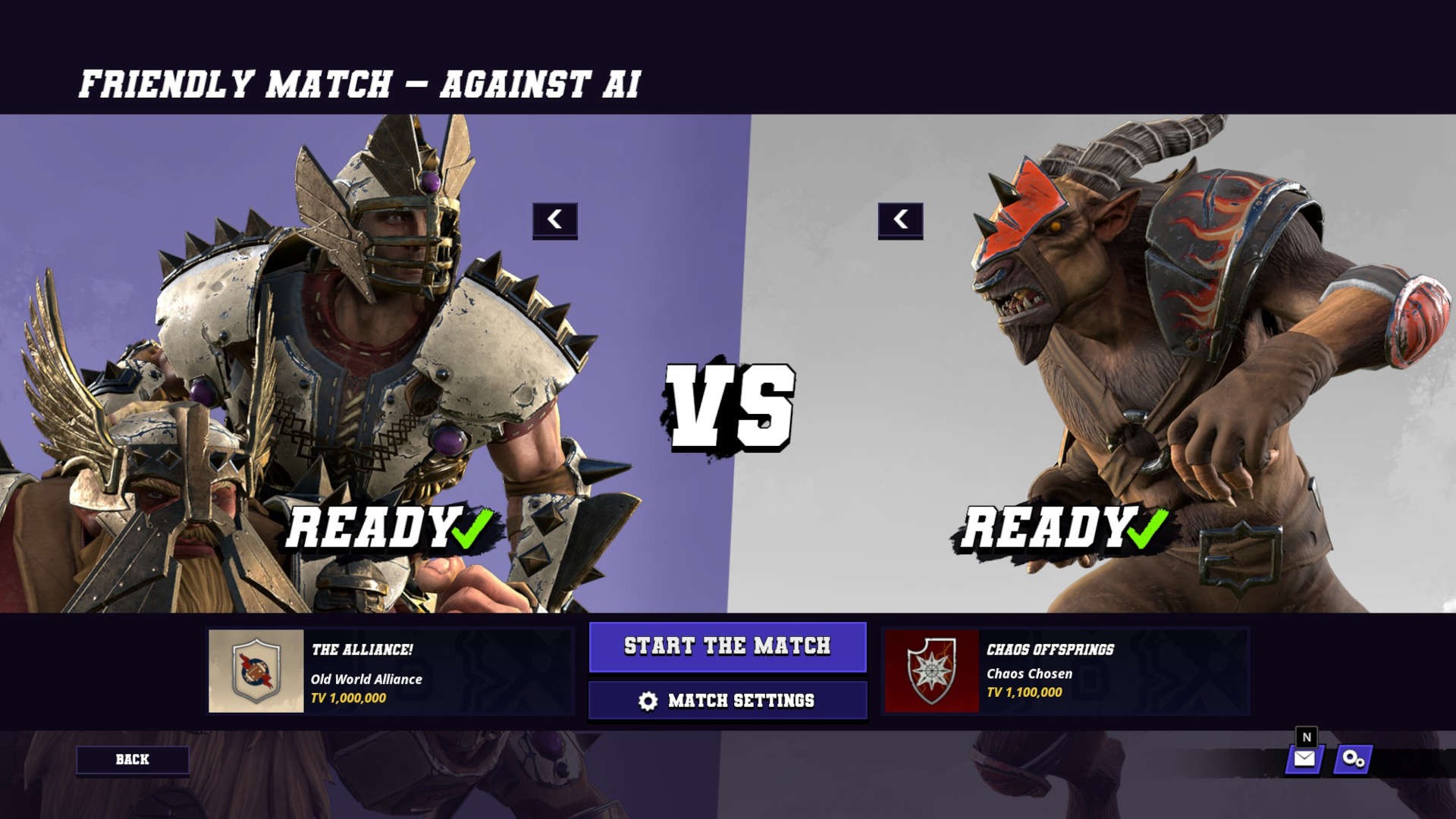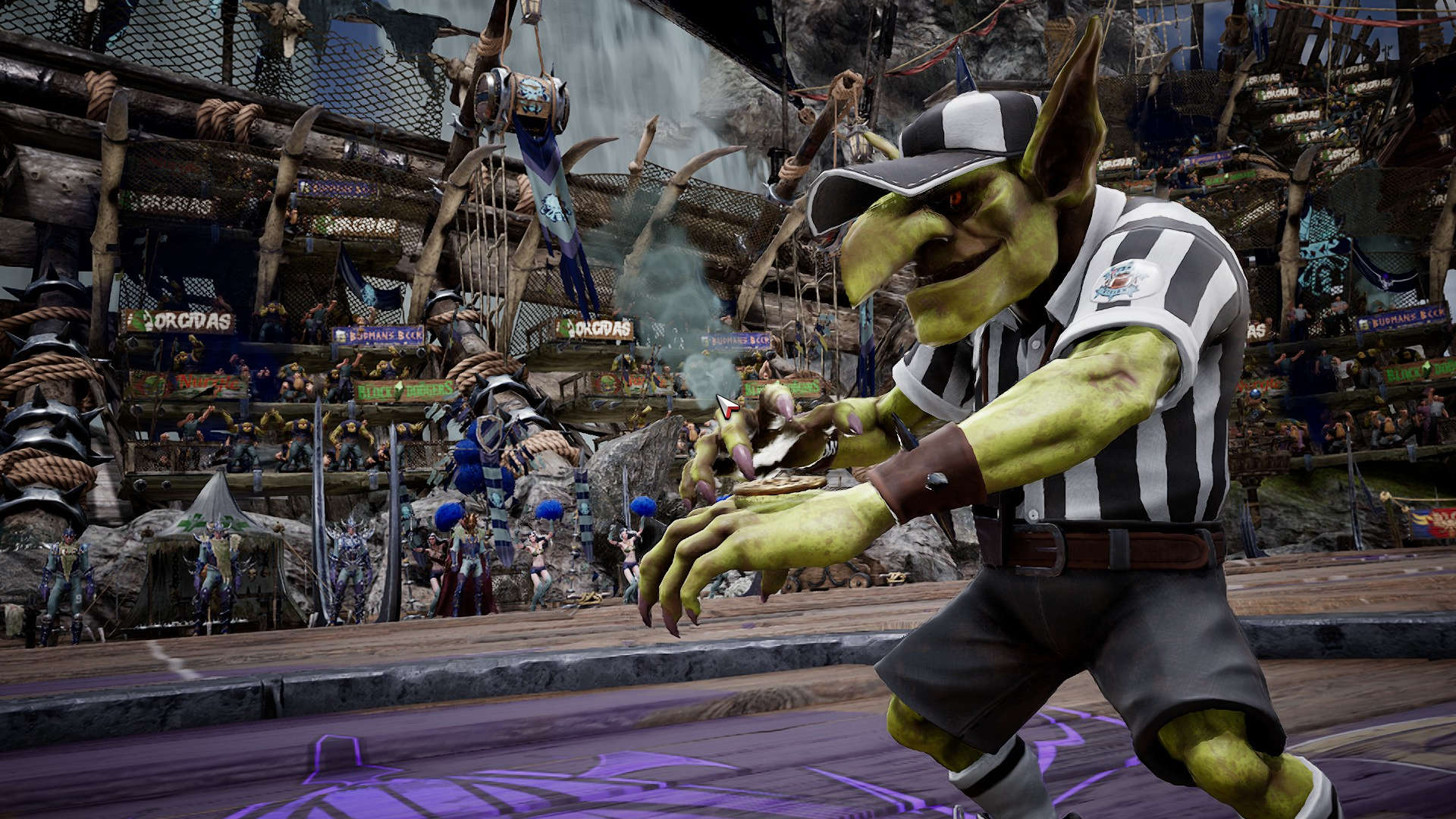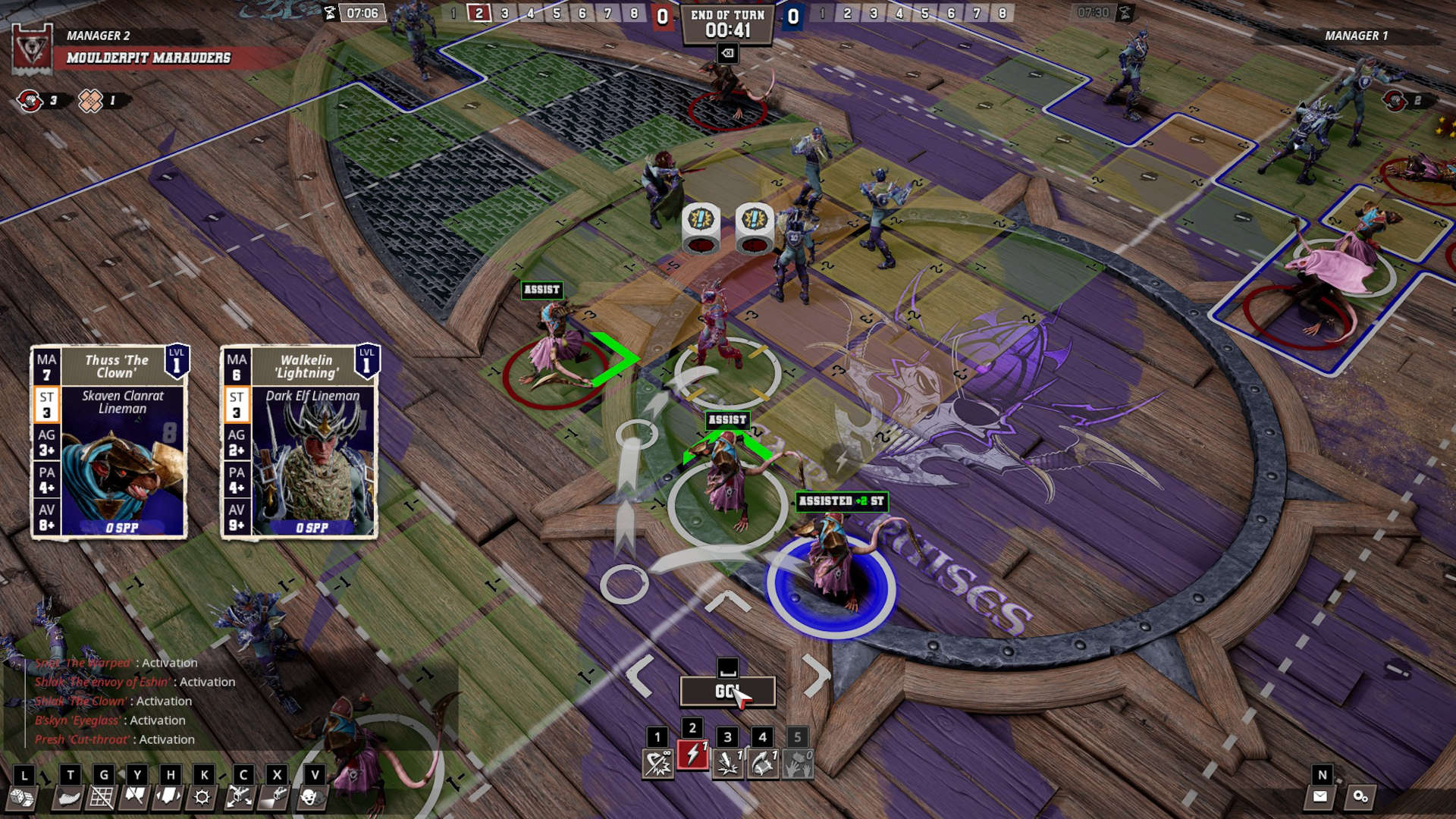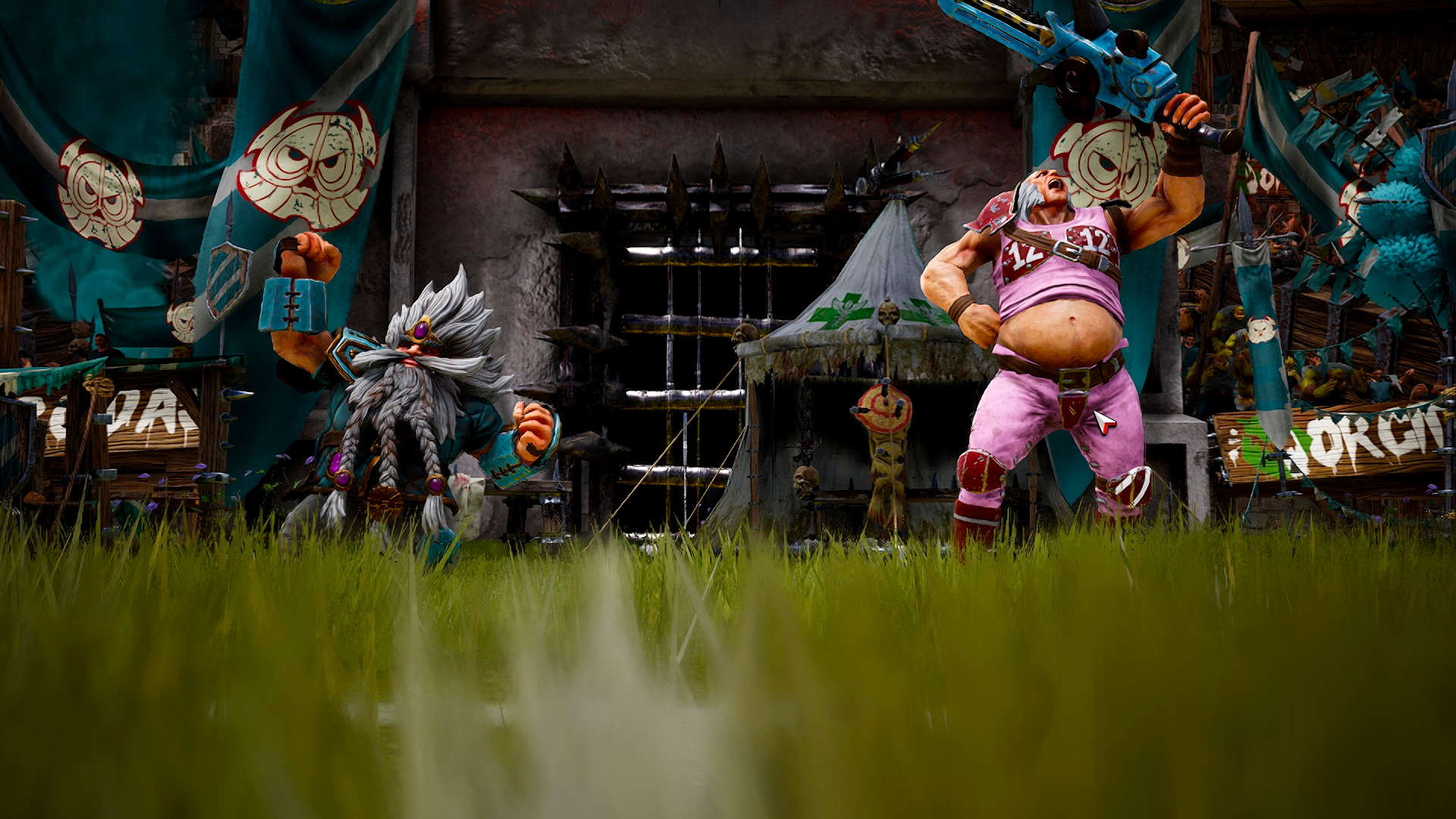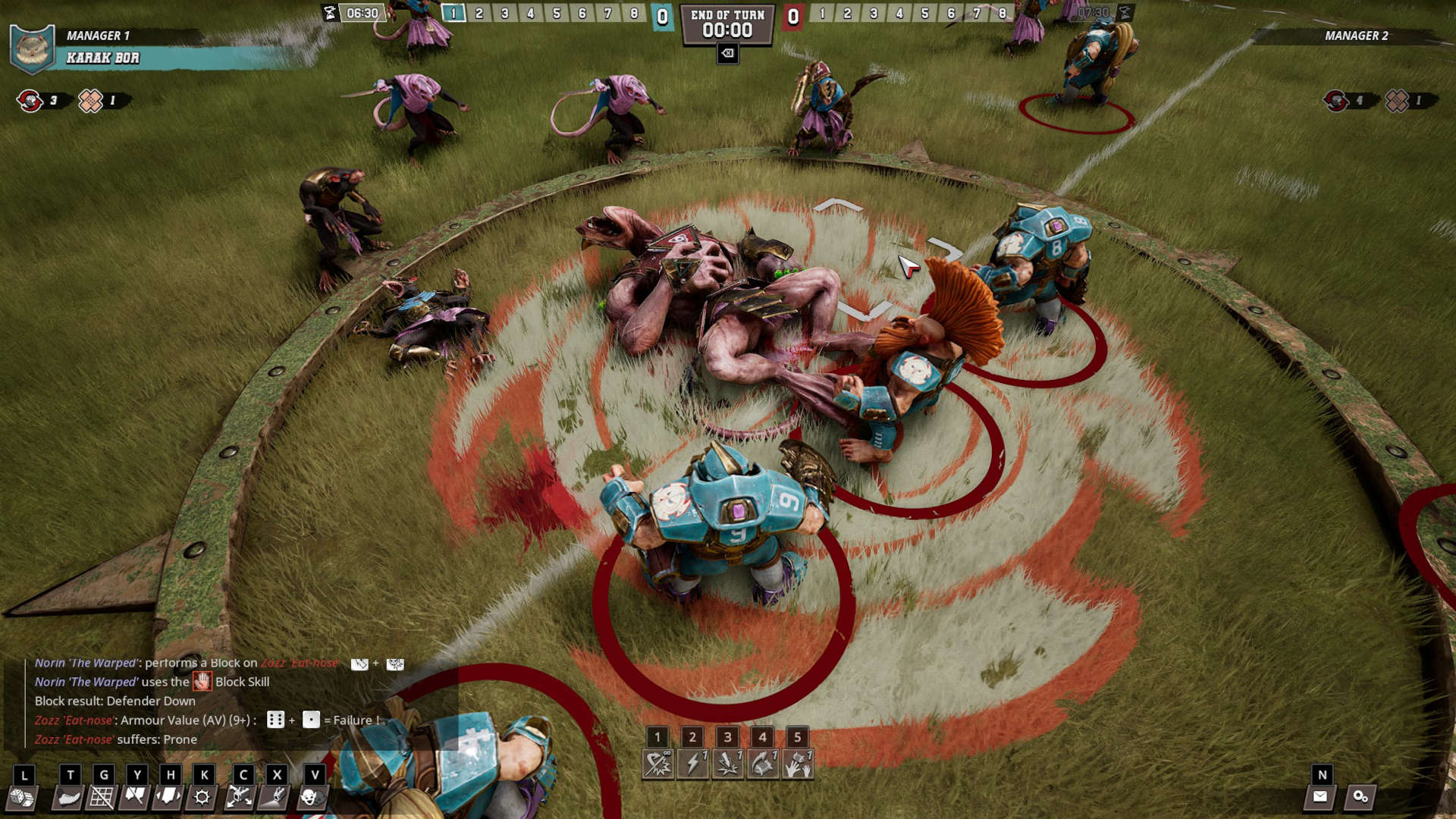Blood Bowl III is the baby of two imposing parents: Blood Bowl II, developer Cyanide Studio’s previous successful adaptation of Games Workshop’s venerable tabletop game, and Blood Bowl itself. Blood Bowl is tabletop gaming royalty, one of those rare designs that emerged in the 80s and has maintained an active, global fan community ever since, with only incremental changes to the rules.
Blood Bowl III adopts the latest version of Blood Bowl’s tabletop rules, 2020’s Blood Bowl Second Season Edition. To briefly recap the game for the uninitiated: Blood Bowl is American football in a comedy version of the Warhammer The Old World universe. Two teams – say, Orcs vs Humans, or Dark Elves vs Chaos Warriors – face off across a gridded pitch and try to get the ball to their opponent’s end-zone, perhaps through deft footwork and passing, perhaps by breaking opposing player’s noses, maybe by hiding a chainsaw in their trousers.
The beating heart of the game is a calculus of risk/reward. Other than moving through uncontested spaces, everything a player does will trigger a die roll – passing and catching, blitzing enemy players, picking up the ball, dodging through a tackle zone, trying to bribe the referee…
Players have different capabilities, and the proximity of allies or enemies affects your chances of succeeding. As soon as you fail a roll your turn ends in a ‘turnover’ and your opponent gets to start activating models. With just eight turns per player per half, you’re seeking to minimise your risks and create a nightmare for your opponent, without ever being certain your plans will pan out.
Teams are enormously asymmetrical. You might be playing a game that’s all about passing and dodging that your opponent can’t compete in, so they just try to injure so many of your players that you can’t field a full team in the second half. Some teams, like the all Halfing Moot, are officially and intentionally rubbish. There’s a campaign system, players accruing ‘Star Player Points’ to buy new skills and stat upgrades, or getting injured or even killed.
The core of the game is simple but you do need to get it all into your head at once before it makes sense. Blood Bowl III’s project Manager Gautier Brésard acknowledges that Blood Bowl II didn’t do a great job of introducing this breadth to new players, saying “Blood Bowl II had this long campaign where you were introduced over several matches to really core mechanics… in the first few matches you didn’t even have turnovers”.
Blood Bowl III’s introductory scenarios are snappy. They took me less than an hour to work through, after which I felt I had a shallow but comprehensive understanding of how to play the game, if not how to be good at it. Then it was time to build a team.
There are twelve teams in the base game, like the all-rounder Humans or the stinking Nurgle Rotters. Each one has a difficulty rating in stars and a quick description of its strengths and weaknesses, very handy for new players. As well as starting off different, Blood Bowl teams develop differently depending on their access to skills and how survivable they are – it’s good to know before you start an Elven Union team that your star players are at risk of having their neck snapped like a twig.
I picked Skaven (rat men) because I fancied dodging and passing, and I just plain like the rat bastards. I had no idea how to spend my starting budget on hiring players, but there’s a helpful “default” option which picks a balanced squad.
As we all know, game journalists are bad at videogames, but my first few games in the single-player campaign and then in friendlies against the AI were all resounding wins. That smelt like weak AI rather than a sudden burst of competence, so to test it, I set up a game against an Elven Union team.
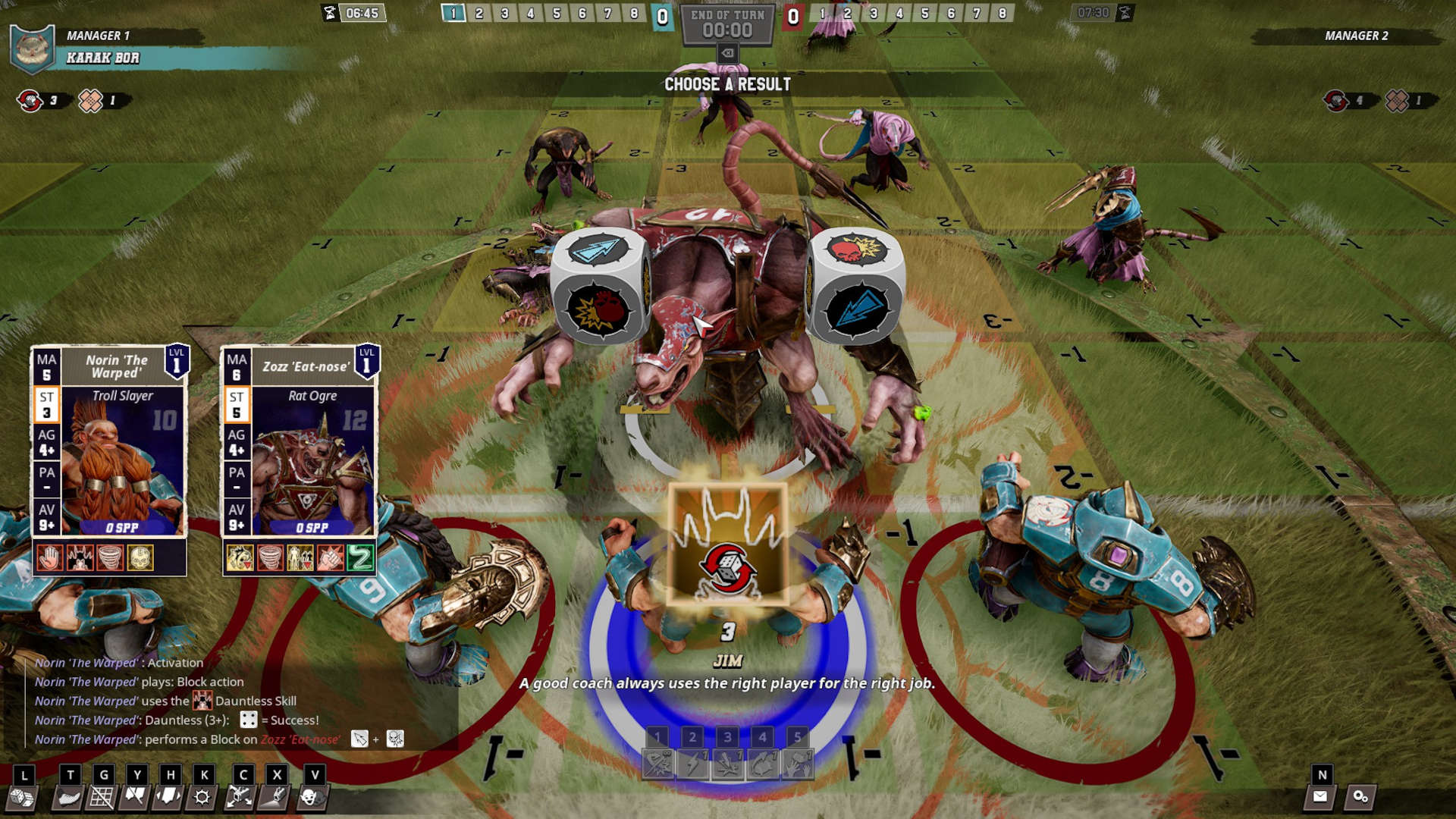
The Elven Union play the technical side of Blood Bowl rather than the tooth-breaking side. They win games by passing and dodging, exploiting the weakest parts of enemy scrum lines, blocking and blitzing only when they’re confident they’ll come out on top and it’s essential to open up their ball carrier for a run on the end zone.
When I gave the Elven AI possession of the ball, it formed a defensive square of supporting linemen around its ball-carrier. As the game continued, it was extremely skittish, reticent to probe my lines. Eventually I let several turns pass by without taking actions, and the elves were so defensive they didn’t come close to scoring.
Unless there’s some radical patching, single player Blood Bowl III is going to provide a tutorial and not much else. But that may be a feature, not a bug. There’s a big online multiplayer community for Blood Bowl, and Blood Bowl III is positioned as the next, natural home for those players and for newcomers alike – slicker, quicker, and with more features than Blood Bowl II.
Games are definitely quicker than in Blood Bowl II. Partly that’s because the timer has changed, with two-minute turns and a seven and a half minute time-bank. But the fundamental action of declaring actions for your players is smoother too. Click a hex and pathfinding does a good job picking the shortest, safest route. Creating and undoing waypoints is also easy. Clicking on other players during movement also suggests the most contextually appropriate action, or you can select from a wheel. It’s slick.
Visual information wasn’t perfect – I had a little trouble determining which end of the field was mine in a rats-on-rats game, and there are so many damn skills in Blood Bowl that I haven’t yet built up a mental catalogue of all their symbols. But those were minor quibbles. Stat cards appear when you hover over players, tooltips for skills appear when you hover over their icons. Performance was very solid, and the game even ran on my basic laptop.
Blood Bowl II was solid – Blood Bowl III adds nothing revolutionary, but plenty of polish and some welcome quality of life tweaks. Individually these changes are minor but for a lifestyle game where players may spend hundreds of hours, they come together to have a huge impact.
Tools for creating player-administered leagues are still present and in Blood Bowl III, though I wasn’t able to test them. Brésard says league administrators will have “at least as many tools as they had in Blood Bowl II… if we add new competition rules, it’s going to be as options that league admins can activate or deactivate”.
Then there’s the new global ranked multiplayer ladder, with three month seasons that will run parallel to a ‘Blood Pass’ of unlockable cosmetics. It’s a glossy, flagship feature, and Cyanide must be hoping that they can create a live-service game with, if not mass appeal, a much wider niche than they enjoy for Blood Bowl II.
There is one big problem with this. In tabletop Blood Bowl, experienced and rich teams are likely to get richer still. The runaway leader effect is noticeable in any persistent tabletop Blood Bowl league, and will only be worse when players can grind online indefinitely.
Brésard is emphatic that “at launch, we are only starting the first version of this official competitive environment”, and the team is planning to iterate until it can prevent the runaway leader effect being a problem. The team’s starting with the ‘redraft’ rule from the tabletop game, which increases the cost of retaining skilled players from one season to the next. However they’re reticent about any change that would move their game away from the tabletop edition.
I wasn’t able to test out multiplayer games, so I don’t know how well match-making will function or how stable net code is. Those are really, really critical to the success of this product. Blood Bowl III feels like it could be the new home stadium for Blood Bowl, and may even entice new players into the game – but we won’t know until the season starts in earnest.
If you’re a fan of digital Blood Bowl and fancy giving the tabletop version a go, we’ve got a guide to painting miniatures to get your plastic teams ready for a new season. We also have guides to the best two player board games, best funny board games, and best strategy board games for any Blood Bowl veterans who want to try something different (but not too different) – not to mention our guide to the outright best board games.


